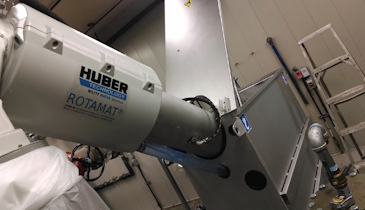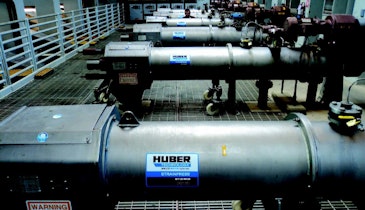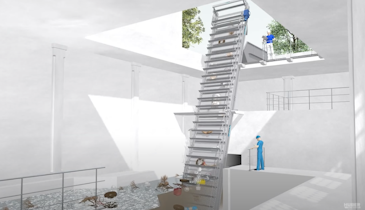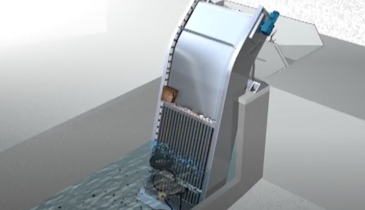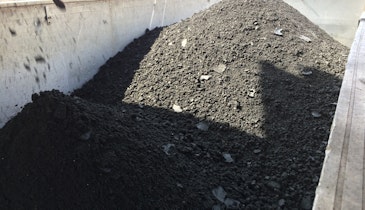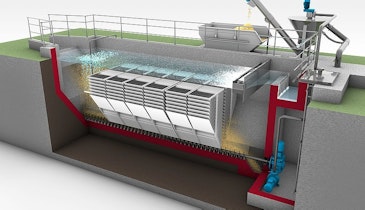Microscreening systems pose an interesting alternative to primary clarifiers for several important reasons. First, microscreens perform at or above clarifiers and settling tanks in terms of removal rates, but with a smaller footprint. Microscreening systems also provide good process control during unexpected influent conditions or storm events and reliable operation, according to manufacturers. Finally, microscreening can be undertaken with low investment cost.
Microscreen features
The characteristic feature of a microscreen is its simple screen basket, horizontally installed in a channel or tank where water flows through the screen from inside to outside. This horizontal position of the screen drum creates a large filter surface that can be utilized while a very high maximum possible upstream level is also possible. As the water level upstream of the machine increases and more material is accumulated, a filter carpet is developed on the filter mesh.
The filter carpet accumulation creates a deep-bed filtration effect, where particles retained are much smaller than the nominal aperture size of the mesh. When the water level upstream of the drum screen reaches its maximum permissible level, the screen basket rotates and a fixed spray bar cleans the basket surface, from outside to inside, with wash water at a pressure of 90 to 100 psi.
The fine screenings (primary sludge) accumulate in a trough below the spray bar, where they are conveyed by gravity to downstream treatment processes using a closed sluice channel.
HUBER Technology is an industry leader in solid separation technology. The company develops and manufactures innovative solutions, with over 40,000 installations worldwide.
704-990-2053 | www.huber-technology.com | huber@hhusa.net
